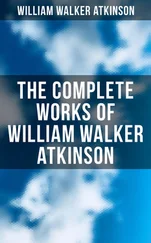It must be remembered that what has been said in this chapter about Testimony, refers not only to verbal testimony, but also to the testimony contained in books and other writings, and to the testimony of tradition. The same general principles apply to all forms of testimony.
Hyslop says of Argument upon Testimony: “This is a form of argument based upon the credibility of a witness to real or alleged facts. The facts are circumstantial evidence of the thesis, and the character of the witness is a measure of the weight attaching to his testimony on the facts. ‘The degree of weight to be attributed to testimony is always to be estimated by this view of the nature of testimony—that it is a sign, implying the facts to which it testifies as more or less necessary conditions of its having been given. Whenever, therefore, occasions or motives exist in the case for giving the testimony other than the truth, the credibility of the witness will be so far impaired. We are thus to judge of the credibility of historians. The historian of a sect or of a party must be received as a credible witness only so far as it may appear that truth was the condition of his speaking as he does. All admissions against his own sect or party, unless made as baits or lures, will be received as honest testimony. If these qualifications are wanting, there is nothing on which testimony can rest.’ But where honesty and candor, as well as good judgment, exist, the facts attested will have all the weight of these qualities, though this may not be so great as in the case that the facts are personally known by the disputants.”
Testimony may be not only as regards facts , but also as regards opinion, in which latter instance the testimony is known as “expert evidence.” Expert evidence is the testimony of persons presumed to be competent to exercise a higher perception, judgment and discrimination in the particular subject, than the ordinary individual, by reason of their special training, experience and judgment. As Hyslop well expresses it: “It means to accept the judgment of qualified men where common experience is not a guide.”
Evidence is the raw material from which the finished product of argument is woven. The grade of the product—its degree of fineness—its texture and weave—its adequacy and fitness for its purpose—all these things depend upon the skill of the weaver. And, moreover, the very color of the woven material, depends upon the art, science and skill of the artisan handling the material from its crude state until it emerges a finished article offered to the consideration of the public. From the same material is produced the coarsest fabric and the finest weave—the crudest hue and the most beautiful tints.
Chapter XIII.
False Argument
Table of Content
IN THE process of Argumentative Discourse there frequently is manifested what is called False Argument, or Argument based upon Fallacy.
Fallacy is: “An unsound argument or mode of arguing, which while appearing to be decisive of a question, is in reality not so; an argument or proposition apparently sound, but really fallacious; a fallacious statement or proposition, in which the error is not apparent, and which is therefore likely to deceive or mislead; sophistry.” The word is derived from the Latin word fallax , meaning “deceitful.” While the question of Fallacy properly belongs to the subject of Logic, still various forms of Fallacy make their appearance as False Argument and very properly form a part of the general subject of Argumentative Discourse.
As Jevons says: “In learning how to do right it is always desirable to be informed as to the ways in which we are likely to go wrong. In describing to a man the road which he should follow, we ought to tell him not only the turnings which he is to take, but also the turnings which he is to avoid. Similarly, it is a useful part of logic which teaches us the ways and turnings by which people most commonly go astray in reasoning.” Likewise, it is proper to inform the student of Argumentative Discourse of the false arguments, frequently used by persons engaged in debate or discussion, that he may guard himself against them by knowing their nature and form.
Omitting the technical fallacies condemned by the logicians, let us consider the leading fallacies employed as False Argument:
I. Arguing from a true collective to a false particular . As, for instance, to argue that because the Jewish race, as a whole, is distinguished for its keen business perception, that a particular Jew must be a keen business man. The individual Jew may be a very poor business man. Likewise, as Jevons points out: “Ministers sitting in cabinet council will probably come to a wise conclusion concerning an important question; but it does not follow that any one of them would come to a wise decision.” Likewise, while statistics show that the percentage of Quakers in prison is very small compared to the whole number of prisoners, still it does not necessarily follow that all Quakers are honest, or even that the Quakers are any more honest than an equal number of people of any one other religious denomination— there is a very small percentage of Quakers in a community. The use of proverbs often comes under this head, for proverbs are notoriously ambiguous, and while possibly true of the race as a whole are often false of any particular individual.
II. Arguing from uncertain meaning of words or terms . The authorities say “A word or term with two meanings is really two words or two terms.” The following familiar false argument illustrates this point in a humorous way: “A cat must have three tails, because (1) Any cat has one tail more than no cat; (2) No cat has two tails; therefore, (3) Any cat has three tails, because any cat has one tail more than no cat .” In the same way may be argued the ‘truthfulness of a man who makes the statement: “I am telling a lie.” If he is lying , he is telling the truth , because he has said he was lying; if he is telling the truth , he is lying , because he has so asserted. The remedy for this form of false argument is the proper understanding and definition of the words and terms used in the premises of an argument.
III. Arguing a false conclusion . This arises from introducing into the conclusion new matter, or matter not contained in the original premises . For instance the fallacious argument: (1) All men are mortal; (2) Socrates is a man; therefore (3) Socrates is wise. Or, De Morgan’s celebrated illustration: “(1) Episcopacy is of Scripture origin; (2) The Church of England is the only Episcopal church in England; therefore, (3) The church established is the church that ought to be supported.” Or as Jevons says: “The device of the Irishman who was charged with theft on the evidence of three witnesses who had seen him do it; he proposed to call thirty witnesses who had not seen him do it. Equally logical was the defense of the man who was called a materialist, and who replied, ‘I am not a materialist ; I am a barber .’”
IV. Arguing a false cause . Hyslop says: “It consists in arguing from a mere co-existence or sequence, a causal or necessary connection.” It also often arises from a confusion of cause and effect, the latter being mistaken for the former. The old saying was: after a fact, therefore because of it.” Thus the argument that as a pestilence arose after the appearance of a comet, the latter caused the former. Or, that a death of a king following the eclipse of the sun, was therefore caused by the latter. Or, that because cock-crowing is always heard just before the sunrise, therefore cock-crowing is the cause of the sunrise. Or, that because the greater the civilization, the greater the number of high silk hats, therefore high silk hats are the cause of civilization. Or, that because a certain Presidential candidate has been elected, the crops failed. A proper understanding of the rules of Cause and Effect will give one the antidote to this form of false reasoning.
Читать дальше












